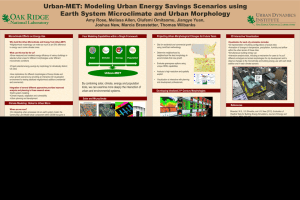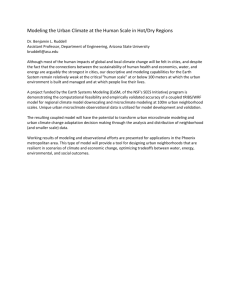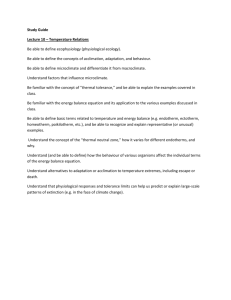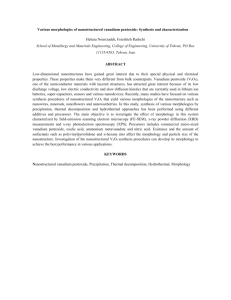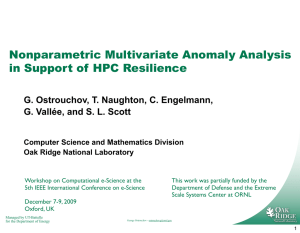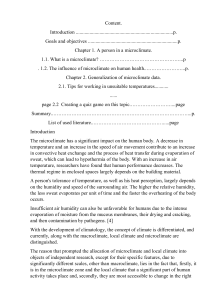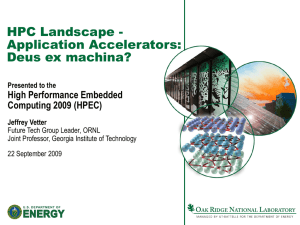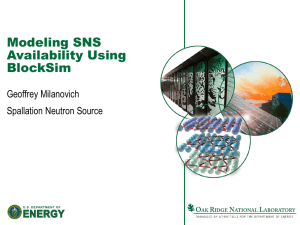Modeling Urban Energy Savings Scenarios using Earth System
advertisement
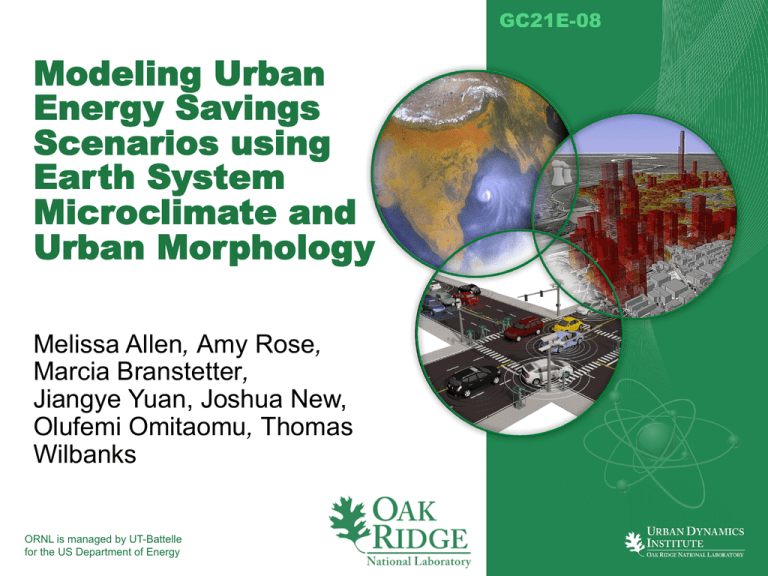
GC21E-08 Modeling Urban Energy Savings Scenarios using Earth System Microclimate and Urban Morphology Melissa Allen, Amy Rose, Marcia Branstetter, Jiangye Yuan, Joshua New, Olufemi Omitaomu, Thomas Wilbanks ORNL is managed by UT-Battelle for the US Department of Energy Microclimate Effects on Energy Use • Why build this tool? – Neighborhood morphology can make as much as an 83% difference in energy use in some climate zones • What can this tool do for us? – Show measured and modeled energy efficiency of various buildings in selected urban areas for different morphologies under different microclimatic conditions – Project potential energy savings by morphology for climatically distinct US cities – Give implications for different morphologies of future climate and urban growth scenarios by providing an interactive 3D visualization environment for testing idealized neighborhood additions (residential and commercial) • Integration of several different approaches provides improved analysis and planning in three research areas: – Earth system modeling – Climate impacts, adaptation and vulnerability – Urban planning and development 2 Climate Modeling: Global to Urban Micro Where are we now? 3 Modeling Gaps Addressed with Urban-MET Spatially Explicit • Population • Urban morphology • Building level thermal and radiative properties Micro Climate • Boundary layer heat island, pollution, precipitation • Heat Island circulation (wind vectors) • Rooftop solar fraction input • Full building-level energy modeling Energy Population Projection 4 • Population projections for 2030 and 2050 • Idealized morphologies for testing new growth • Interactive visualization Solar Climate Energy Urban-MET Population Visual-SOLAR Mode ORNL is managed by UT-Battelle for the US Department of Energy MicroClimate (2m spatial resolution; 2-10s timestep) 1D and 3D Variables Output • • • • • • • • • • • • Wind Speed and Direction Pressure Temperature Specific and Relative Humidity TKE Dissipation Long and Shortwave Radiation Wall and Leaf Temperatures Stomata Resistance Sensible and Latent heat fluxes Water Flux Surface Albedo • Emissions, transport and deposition of selected atmospheric constituents http://www.envi-met.info/hg2e/doku.php?id=kb:lbc 7 Energy Plus Modeling D a t a D a t a D a t a D a t a D a t a D a t a https://energyplus.net/support 8 Sensitivity Analysis for Test Morphologies: Development of Idealized Examples 9 Project Urban Morphological Changes for Future Years • Site for residential and commercial growth using LandCast methodology • Determine neighborhood by neighborhood the best morphology to accommodate that new growth • Evaluate greenspace options using unique ORNL capabilities • Analysis is high resolution and spatially explicit • Visualization is interactive with planning and development professionals 10 Future Direction: Earth System/City Interaction 11 Backup Slides Visual-SOLAR Model Kodysh et al., 2013 13 Coupling Building Energy Simulations to Urban Microclimate and Earth System Models Buildings, pavement, vegetation, etc. from LiDAR and multi-spectral imaging ENVI-met Weather data from met stations, CLMU and/or EPW: Tair, qair, SWdir, SWdif, IR, Wind Speed and direction Modify EPW and configure EnergyPlus Outputs of CHTC for each linking unit Outputs of Energy Plus: Tsurf, Tair, Rlw 14 After Yang et al., 2012 Outputs of ENVI-met: Vair, Tair, qair, Mean Ts, Mean ground reflectance, Mean Tree transmittance Convective Heat Transfer Calcs Interactive Visualization
